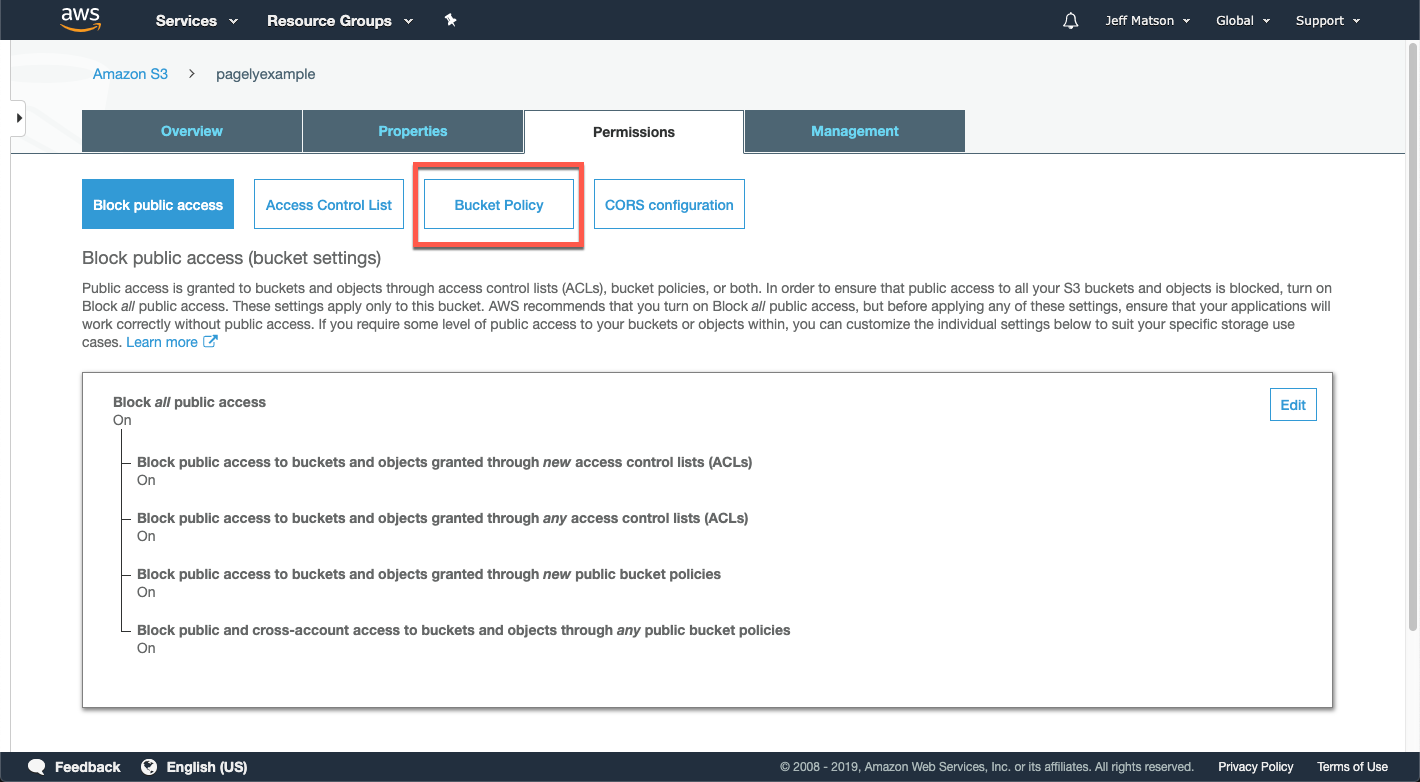
- #Permissions for a s3 image bucket how to
- #Permissions for a s3 image bucket pdf
- #Permissions for a s3 image bucket install
- #Permissions for a s3 image bucket download
- #Permissions for a s3 image bucket free
Then, you can switch your current directory to Ruby 3.0.0 with
#Permissions for a s3 image bucket install
If you're using rbenv, you can install Ruby 3.0.0 with If you have homebrew, you can install it with Note that rbenv is a very standardized way to manage different Ruby versions. I'll use the following versions for this example: If you already have a Rails app, you can skip this step, but you'll still want to pay attention to the AWS configuration. Next, we'll need to create a basic Ruby on Rails application to interact with our bucket.

You can skip adding tags to the user, so just go through review and finish creating the user! Take note of the Access key ID and the Secret access key, as we'll need them later in our Rails configuration. Next, search for S3 and click the checkbox next to AmazonS3FullAccess. Click the tab for "Attach Existing Policies Directly". On the next screen, you'll need to set permissions. Name your new user something like active-storage-user and only give it programmatic access.

Click "Users" on the side panel.Ĭlick "Add User". Start by heading over to identity access management (IAM) on the AWS console. Finally, leave all the tags blank and keep encryption off.Īfter you click "Create", you'll have a functional S3 Bucket! However, you still need to configure permissions on the bucket.You can also leave "Bucket Versioning" set to "Disable".Keep "Block All Public Access" selected to ensure that your bucket isn't open to anyone who shouldn't be using it.Create a memorable name and leave the default region for now. You'll be immediately taken to a wizard where you'll set the bucket details.

Once you're in the S3 Management Console, click on the "Create Bucket" button. In the AWS console, perform a search for "S3" and select the product offering from the drop-down menu.
#Permissions for a s3 image bucket free
Our simple usage of Lambda is included in the free tier, but if you're worried about accidental overages, you can set up a budget to control your usage and prevent unexpected billing. You'll be prompted to fill in more information, including the account type and contact information, and you will need to enter credit/debit card information to cover any usage outside of the free tier. Head on over to sign up here and fill in your information to get started! The free tier is generous and will allow us to get started right away. If you don't have an account with Amazon Web Services, it's not too much work to create one.
#Permissions for a s3 image bucket how to
You'll learn how to transfer data to S3 using the AWS SDK Ruby Gem, store files on behalf of application users, and manage file permissions. We'll begin by creating an AWS account and an S3 bucket and quickly move on to creating a bare-bones Rails application to use in performing our integration. This integrates directly into Rails' own ActiveStorage, so the actual API calls to Amazon Web Service are abstracted away from us in common use cases. S3 provides a method for uploading files that can then be retrieved programmatically or directly by a URL. This article will walk you through leveraging S3 in your Ruby on Rails application.
#Permissions for a s3 image bucket download
We can directly upload and download files while managing permissions for others (whether applications or individuals) to do the same. It gives developers of sites of all sizes access to the advantages of Amazon's massive scale. The three S's in 'S3' stand for "Simple Storage Service", which is an acutely descriptive name. Files stored inside the buckets are often referred to as 'objects'.

S3 stores files in 'buckets', which are analogous to folders. Developers of any skill set can leverage this to store files relevant to their applications securely while achieving near-perfect uptime. S3 is a cloud service built on buckets in which you store files and manage permissions.
#Permissions for a s3 image bucket pdf
Ruby (169) Honeybadger (76) Rails (50) JavaScript (35) PHP (24) Python (16) Laravel (14) Briefing (13) DevOps (9) Go (9) Elixir (8) Briefing 2021 Q3 (7) FounderQuest (6) Briefing 2021 Q2 (6) Node (6) Aws (6) Django (6) Conferences (5) Security (4) Developer Tools (4) Testing (4) Heroku (3) Debugging (3) Docker (3) Events (2) Jekyll (2) Startup Advice (2) Guest Post (2) Sidekiq (2) Serverless (2) Git (2) Front End (2) Rspec (2) Elastic Beanstalk (2) Oauth (2) React (2) Logging (2) Case Studies (1) Performance (1) Allocation Stats (1) Integrations (1) Bitbucket (1) Mobile (1) Gophercon (1) Clients (1) Vue (1) Lambda (1) Turbolinks (1) Redis (1) CircleCI (1) GitHub (1) Crystal (1) Stripe (1) Saas (1) Graphql (1) Elasticsearch (1) Import Maps (1) Build Systems (1) Minitest (1) Guzzle (1) Tdd (1) I18n (1) Github Actions (1) Sql (1) Postgresql (1) Xdebug (1) Zend Debugger (1) Phpdbg (1) Pdf (1) Multithreading (1) Concurrency (1) Web Workers (1) Fargate (1) Websockets (1) Markdown (1) Active Record (1) Django Q (1) Celery (1) Amazon S3 (1) Aws Lambda (1) Amazon Textract (1) Sucrase (1) Babel (1)Īmazon Web Services' S3 is an object storage service that boasts security, scalability, data availability, and performance.


 0 kommentar(er)
0 kommentar(er)
